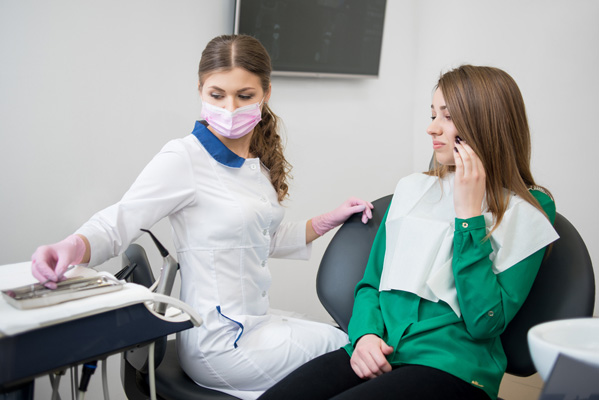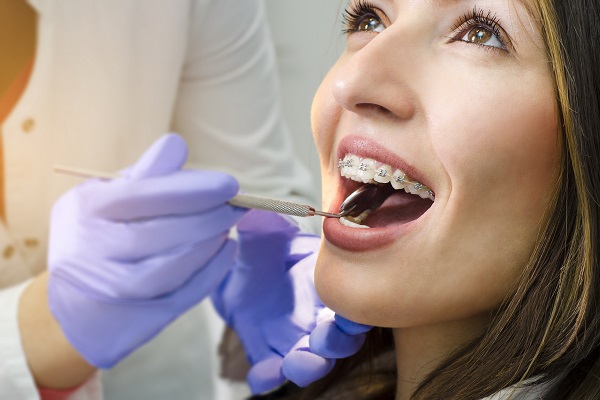Braces Issues that May be an Orthodontic Emergency

Emergencies, especially health-related ones, can be scary and often unpreventable. Fortunately, orthodontic emergencies are rare. However, learning about the most common emergencies and what to do if one does occur is important and beneficial.
New orthodontic patients may experience slight discomfort and pressure when first getting their braces or oral appliances placed. These symptoms are normal and should dissipate within the first few days or weeks, depending on the type of orthodontics and the patient's pain tolerance. Over-the-counter pain medication can help ease discomfort. However, severe or persistent pain should not occur and typically signifies an underlying problem.
True orthodontic emergencies
A true orthodontic emergency refers to conditions that cause severe or persistent pain or damage to the orthodontic appliances. True orthodontic emergencies include:
- Infection, swelling, or bleeding of the gums, mouth, or face
- Major trauma or injury to the teeth, face, or mouth
- Severe unmanageable pain in the mouth
We urge patients to contact us as soon as possible if one of these emergencies occurs. We will evaluate their braces and ensure they are in good condition and can make any necessary adjustments to their individual treatment plan.
Types of orthodontic emergencies
The vast majority of orthodontic emergencies are minor and can be corrected in one visit. However, the longer patients wait to address their concerns, the longer their total treatment time may take. Here are the most common orthodontic emergencies and how an orthodontist can remedy them.
Loose/broken brackets, bands, or wires
Loose or broken brackets, bands, and wires are not an urgent problem. Patients can apply wax on the gum tissue surrounding the affected area until their appointment. We can re-attach the patient's bracket, bands, or wires necessary during their next visit.
Misplaced or poking archwire, bracket, or tie
Wires that stick out and irritate the gums or cheeks can be fixed using a Q-tip (until the next appointment). Wires and ties may cause more problems if they are not affixed to the brackets. Patients can use clean tweezers to re-attach the wires or ties to the brackets at home. We will replace an elastic tie during the next appointment if the elastic tie is missing. This is not considered an orthodontic emergency as it will not affect the patient's treatment.
Loose teeth or tooth pain
It is normal to feel as though the teeth are loosening - that means they are moving! Most orthodontic patients feel loose teeth and tooth pain, especially at the beginning of treatment as they adjust to their braces. Along with pain, patients may feel tenderness and soreness. Patients can use saltwater rinses (with warm water) to ease pain and these associated symptoms. They may also place a heating pad on the outside of the jaw to reduce pain and swelling. We encourage patients to address these concerns with the orthodontist at their next visit to ensure their braces are in good condition.
A broken retainer
Retainers can, although rare, bend or break. However, this does count as an orthodontic emergency. Stop wearing the retainer immediately if this occurs, and contact the orthodontist for a replacement. If the retainer breaks, collect the pieces and bring them to the appointment. It is important to schedule an appointment as soon as possible to prevent teeth from shifting back into their misaligned position.
Swallowing braces or appliances
Of rare orthodontic emergencies, swallowing pieces of braces or appliances is the rarest. In most cases, these pieces will pass through normal bowel movements. However, if a patient experiences difficulty swallowing or breathing or has had irregular symptoms since the occurrence, we recommend contacting the orthodontist and getting evaluated immediately.
Do not wait on emergencies
Although orthodontic emergencies are rare, they do happen. We always inform patients about all that could go wrong during their consultation and placement appointments and how to prevent them. We recommend patients clean their orthodontic appliances stringently to avoid infection or inflammation. Patients should also practice regular oral hygiene to prevent dental complications that may lead to an emergency. Routine checkups and cleanings are imperative to good oral hygiene and upkeeping orthodontic treatments.
If you experience any of the above conditions, try an at-home remedy and over-the-counter medications until your emergency or next regular appointment. We always put our patients' comfort and safety at the forefront of our practice and will ensure your treatment goes as intended, adapting with any necessary changes along the way. Our team is equipped to handle and remedy orthodontic emergencies. If you experience any other dental or orthodontic problems not listed above, contact our office at (718) 416-6368, and we will schedule an appointment for an evaluation.
Request an appointment here: https://www.brooklyn-orthodontist.com or call Brooklyn Heights Orthodontics: Susan Liebman, DMD at (718) 416-6368 for an appointment in our Brooklyn office.
Check out what others are saying about our dental services on Yelp: Orthodontic Emergency in Brooklyn, NY.
Recent Posts
Searching for braces near me is often the first step toward achieving a healthier, more aligned smile. Braces can help correct a range of dental issues, including crooked teeth, bite problems, and jaw misalignment. Although treatment is typically performed by an orthodontist, general dentists play a crucial role in preparing patients for the process and…
Orthodontics can fix almost all teeth alignment issues. Poorly aligned teeth can ruin the way that your smile looks, and they can also leave you more vulnerable to a variety of oral issues, like tooth decay and gum disease, because it is harder to remove plaque from teeth surfaces. Improperly aligned teeth can also make…
Orthodontics help straighten improperly aligned teeth. Teeth alignment problems can ruin the appearance of your smile and leave your teeth more vulnerable to issues like tooth decay and gum disease.Orthodontics uses devices like braces and clear aligners to improve the alignment of teeth by gradually pushing them to better positions over time. Common teeth alignment…
Oral hygiene is vital when you are straightening your teeth with orthodontics. Oral appliances used to straighten teeth like braces and clear aligners can get in the way of oral hygiene. These appliances, braces in particular, can also increase your risk of oral issues like tooth decay.The oral appliances used to straighten teeth can increase…


